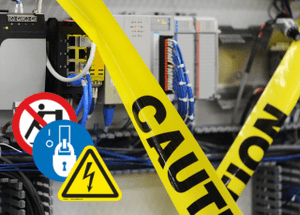Considerations for Navigating the New Manufacturing Environment

Preparing Manufacturing for the Next Phase
As we begin approaching the second half of 2020, it’s clear that the COVID-19 pandemic has triggered economic and supply chain disruptions across the globe. While companies in various corners of the manufacturing industry, from aerospace to fashion, shifted gears to provide essential aid to the front lines during the initial outbreak, many more are now returning to work — and adapting to the challenges of a ‘new normal.’ How will these effects take shape for manufacturers as they face a novel landscape? Read on to learn why agility is the industry’s best bet for acclimating to a rapidly changing workplace.
Supply Chain
Management: Bending to the New Normal
Supply chains are a necessity for nearly every business in the modern age
to effectively run operations. While capacity constraints, cargo restrictions
and limited production capabilities are continuing to disrupt supply chains,
companies are now reevaluating operational processes to manage procurement
challenges. New, complex processes and technological investments will be
required for a smooth readjustment. Here are pointers to help develop a more
resilient and responsive supply chain:
- Assess Your Current Suppliers: How have their capabilities been impacted by COVID-19, and how does this effect your business now and in the future? Answering these questions will help determine if alternate suppliers need to be utilized. Set up regular check-ins with your suppliers to assess issues as they arise in the coming months.
- Extend Supply Chain Visibility: Looking beyond tier-one suppliers to procure goods and services is becoming a norm for manufacturers. Many are investing in additional human resources and specific supply chain management technologies to lessen procurement issues.
- Create a List of Backup Suppliers: Don’t just rely on your exclusive suppliers. Increase the chances of obtaining your supplies in a timely manner by expanding your vendor list. Rotate these vendors often to establish regularity and familiarity. This makes it easier to replace primary suppliers if or when needed.
- Beef Up Inventory Practices: Continuous availability of products helps ensure uninterrupted production. If feasible, maintain larger onsite inventory of required parts while they are available for purchase to avoid any hiccups if they suddenly become out of stock.
- Shift Production: As supply chains will continue to be impacted by the pandemic for some time, availability shortages will likely continue. Slightly modifying production schedules from strictly make-to-order (or demand-driven) to make-to-stock might need to be considered. Building certain parts in advance will help both alleviate availability shortages and help sustain periodic demand increases.
- Evaluate Downstream Logistics: In the COVID-19 environment, products that were once moved by boats are now being moved via airplanes. It’s likely that adjustments will need to be made regarding distribution of your goods and services. Meet with your distributors and assess how these changes will impact your relationship going forward.
COVID-19 has not been eradicated, making a second wave probable, and future pandemics or natural disasters are always a possibility. Healthily assessing your supply chain and implementing the above considerations can help reduce negative impacts now and in the coming years.
Digitalization: A
Competitive Advantage
Preliminary studies are showing that manufacturers who have shifted towards
digitalization to offset supply chain and operational issues during the early
stages of COVID-19 are faring better than others. Throughout the years,
advances
in AI and IO technologies
have allowed for greater efficiencies in
predictability, availability and flexibility of supply chains and day-to-day
operations, allowing for greater resilience and adaptability in the COVID-19
climate. Using robust data analytics and other digital tools can help improve
the efficiency of procurement teams, providing an advantage over competitors.
Here are a few recommendations to leverage digitalization in response to
current and ongoing disruptions:
- Consider Robotics to Support Human Labor: Most AI robotics can integrate seamlessly in a short amount of time due to advanced, deep-learning capabilities and can be trained in days, sometimes even hours, to perform automated tasks. These technologies include visual quality control inspectors and fully autonomous forklift drivers.
- Invest in Analytics Software: Advanced analytics can improve supply forecast by up to 60%, allowing for a more resilient supply chain that helps meet customer needs.
- Implement a Digital Strategy: Technologies like cargo tracking, cloud-based GPS and radio-frequency identification (RFID) can help increase visibility into virtually every aspect of a supply chain, resulting in less blind spots. Adopt IoT equipment with sensors to better track equipment and inventory assets.
- Automation: Shift outdated warehouse and delivery processes to digital formats, like automated warehousing, to increase efficiency and productivity.
Investing in technology and increasing supply chain visibility allows companies to be more proactive in identifying areas of potential or unforeseen risk before it becomes an issue. This helps ensure efficient production operations and, ultimately, satisfied customers.
An Equipped Visual
Safety Communications Supplier: From Safety Labels to Signs to Custom Printing
As companies get back to work and adapt to the shifts and changes brought
on by the ongoing pandemic, employee health and safety is paramount. While
returning to some form of normalcy is undoubtedly a concern for many OEMs, it’s
important to
assess
your liability risk
as operations resume. Will you be operating with new
equipment or producing new products to offset supply chain delays? Maybe you’ve
modified your facility to adapt to production changes. Whether you need
equipment and
product safety labels
, social
distancing signs
or custom
printing options
, Clarion Safety is here to provide the standards-backed
safety visuals to keep people safe and reduce your business liability. To
discuss how we can strengthen your visual safety program,
get in touch with our team.
We’re standing by and ready to help.



